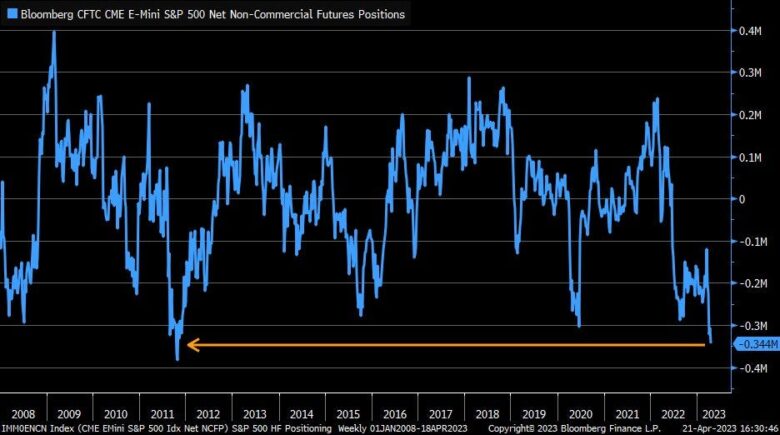The dynamics of the financial markets are intrinsically tied to the broader economic landscape. Investors and traders are monitoring NASDAQ futures live closely for any updates on NASDAQ. The same is happening for the S&P 500, and the aim is to gain insights into the economic outlook and future prospects.
Although the indices may seem not to have glaring differences at a glance, they are different. NASDAQ and S&P 500 represent different segments of the U.S. stock market, each with its unique characteristics and drivers.
This article highlights the economic outlook and future prospects of NASDAQ futures and S&P 500 futures, examining how economic factors and global events influence them.

Source: forbes.com
Contents
NASDAQ Futures: A Focus on Innovation
NASDAQ, short for the National Association of Securities Dealers Automated Quotations, is often synonymous with innovation and technology. There are quite a number of tech giants involved, including Apple, Amazon, Microsoft, Alphabet (the parent company of Google) and Facebook (now Meta Platforms). Due to this, the NASDAQ futures live and every other aspect of NASDAQ is influenced mainly by this rapid evolution of the tech sector.
NASDAQ’s ascent over the past few decades is largely due to the technological revolution. In this digital era, innovations in areas such as cloud computing, artificial intelligence, e-commerce and digital entertainment have propelled tech companies to new heights.
The advent of the COVID-19 pandemic accelerated digital transformation, further boosting the performance of NASDAQ-listed companies. Some of the activities that were but a story in the past have become integrated into daily life, which in turn has benefited tech firms. An example of this is remote work, e-commerce and the increased reliance on digital services.
The future of NASDAQ futures appears promising. Innovations are increasing day by day. Some of them in the likes of quantum computing, renewable energy, biotechnology and autonomous vehicles, are expected to drive continued growth in tech-related companies listed on the NASDAQ.
S&P 500 Futures: Broad Market Representation
While the NASDAQ is tech-centric, the S&P 500 represents a more diverse cross-section of the U.S. economy. Here, you will find companies from various sectors, such as finance, healthcare, consumer goods, industrials and technology. This diversity offers stability and resilience.
Regarding sectoral diversity, the S&P 500’s composition spans multiple sectors, which is advantageous as it provides resilience during sector-specific volatility. It is less dependent on the fortunes of individual tech companies, offering a balanced portfolio. The index also includes value and dividend-paying stocks. This draws a lot of long-term investors who are seeking stability and income generation.
The S&P 500 is known to perform well where economic recovery is concerned. As consumer spending increases and business conditions improve, a broad spectrum of companies in the index benefits.
The future of S&P 500 futures is closely linked to the overall health of the U.S. economy. The index is poised for growth as the nation rebounds from the pandemic and focuses on infrastructure development.

Source: medium.com
Economic Factors Shaping the Outlook
Having said that, without a doubt, several economic factors will significantly influence the future prospects of both NASDAQ and S&P 500 futures.
Interest Rates: Interest rate changes are expected to have a pronounced effect on the performance of both indices. Rising interest rates may lead to a rotation out of growth stocks (common in the NASDAQ) and into value stocks (found in the S&P 500).
Inflation: Inflation can erode purchasing power and affect corporate profits. Investors should consider how each index may respond to changing inflation dynamics and potential central bank actions.
Global Trade: Trade relations and global economic conditions can impact multinational companies in both indices. Trade tensions or agreements can influence stock prices.
Regulation: The future of tech companies in NASDAQ may be shaped by regulatory decisions. Stricter regulations can affect the business models and growth potential of tech companies listed on the NASDAQ.
Geopolitical Events: Political and geopolitical events, such as elections and international conflicts, can introduce uncertainty into financial markets. Diversified portfolios may mitigate geopolitical risks.
Risk and Volatility
Investors must be mindful of the risks and volatility where NASDAQ and S&P 500 futures are concerned.
NASDAQ Volatility: Although they have higher returns, NASDAQ futures tend to be more volatile and carry higher risk. The technology sector is known for its rapid innovation and disruption, which can lead to significant price fluctuations. Investors should be prepared for sharp price fluctuations and consider robust risk management strategies.
S&P 500 Stability: While the S&P 500 is generally considered more stable, it is not immune to volatility. It can experience corrections during economic downturns or market crises.
It is up to investors to carefully assess their risk tolerance and investment goals before deciding between NASDAQ futures and S&P 500 futures. Both have their pros and cons, which require careful consideration.
Staying informed about market trends, economic indicators and company-specific news is a plus. With this, the investor will be able to mitigate risks and make informed investment decisions.

Source: acquisition-international.com
Investment Strategies
Investment strategies for NASDAQ and S&P 500 futures should align with an investor’s objectives, risk tolerance and investment horizon.
Long-Term vs. Short-Term: Long-term investors may favor the stability and dividends of the S&P 500, while short-term traders may seek opportunities in the dynamic and growth-oriented NASDAQ.
Diversification: Combining both indices in a portfolio can provide diversification benefits, balancing the potential for growth with stability.
Sector Rotation: Active traders may engage in sector rotation strategies, moving between NASDAQ and S&P 500 futures based on economic conditions and market trends.
Bottom Line
Predicting the future of financial markets with certainty is an elusive endeavor. However, gaining insights into the economic outlook and prospects of major indices like NASDAQ and S&P 500 is very beneficial for investors. From that knowledge, they can make informed decisions.
NASDAQ futures are driven by innovation and tech-centric companies, offering the potential for substantial growth but with greater volatility. In contrast, S&P 500 futures represent a broader economic spectrum, providing stability and resilience.
The path forward for both NASDAQ and S&P 500 futures will be shaped by economic factors, global events and investor sentiment. As such, a well-balanced investment approach may harness the strengths of both indices, ensuring resilience and potential for growth in an ever-evolving financial landscape.
Whether you opt for innovation or diversification, the future of your investments will be intrinsically tied to the broader economic outlook.
